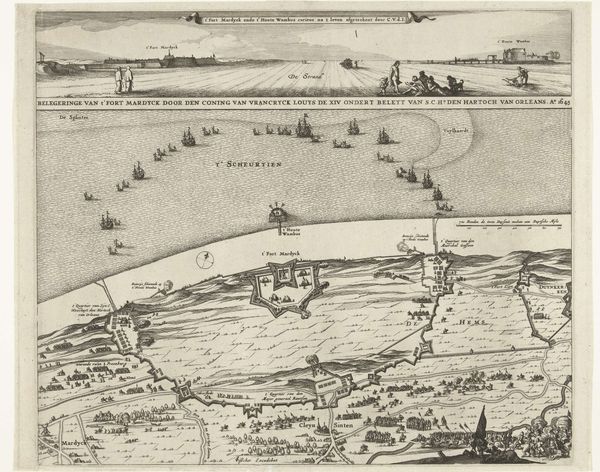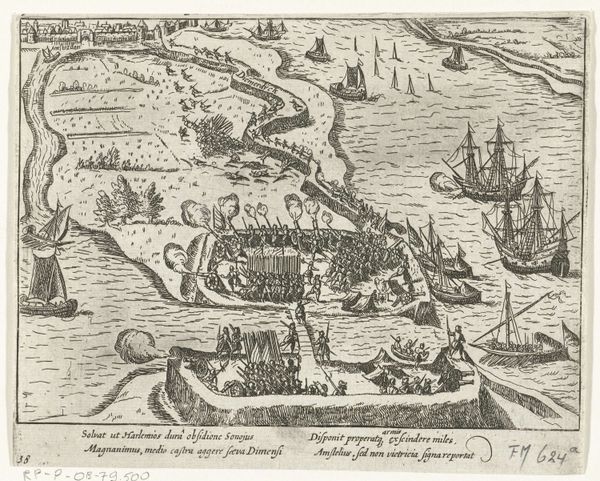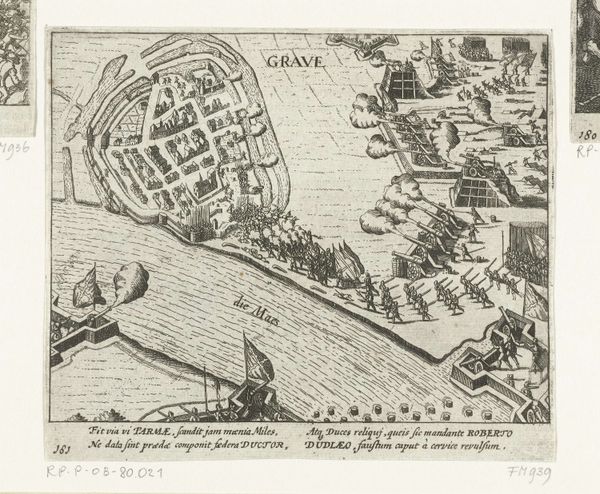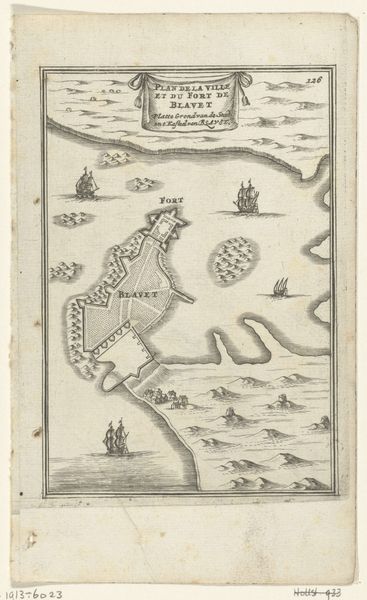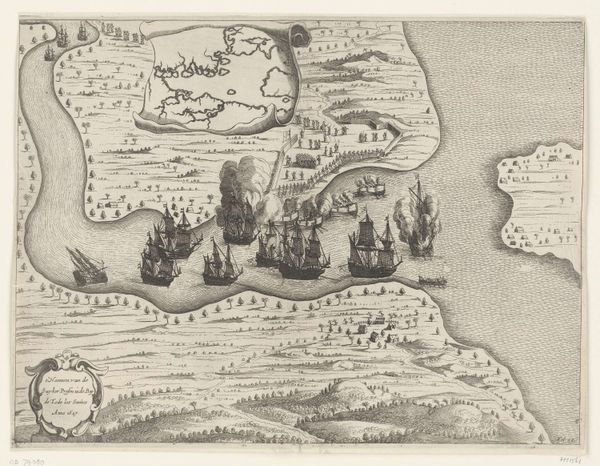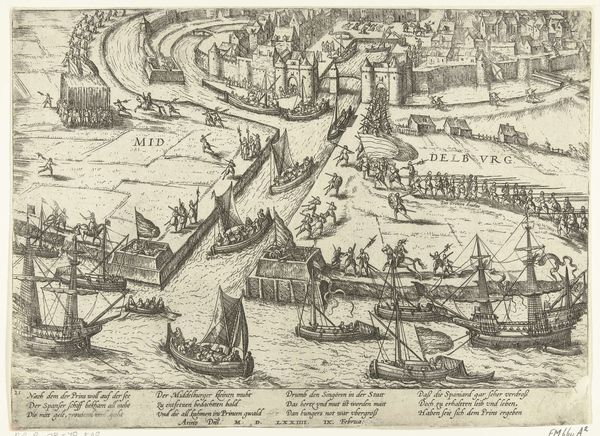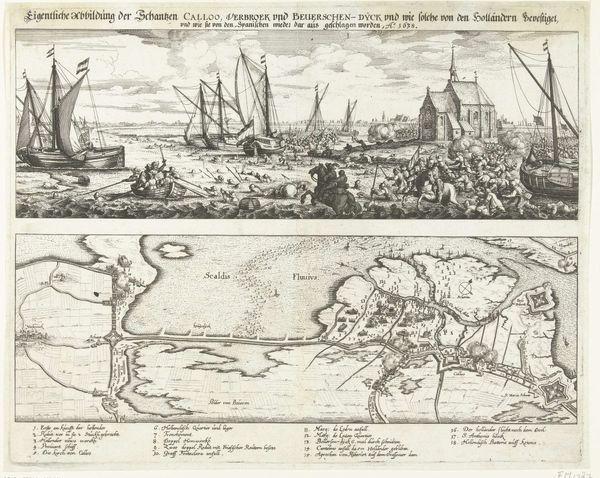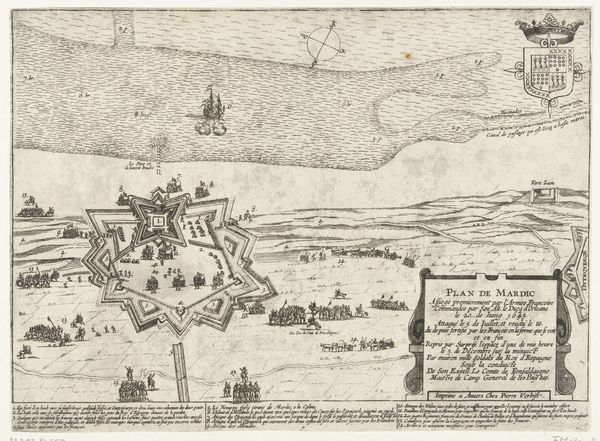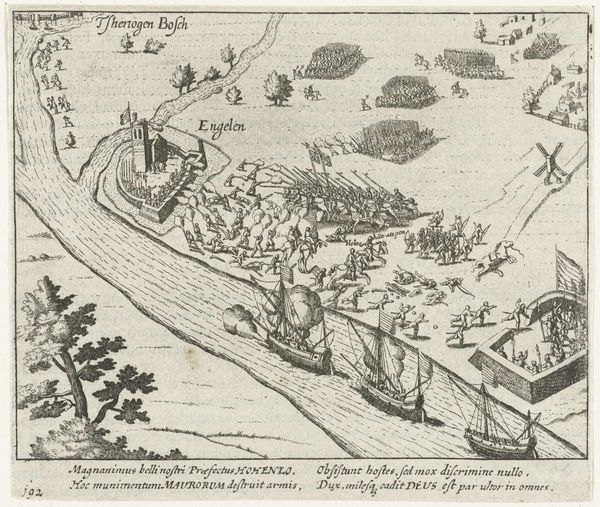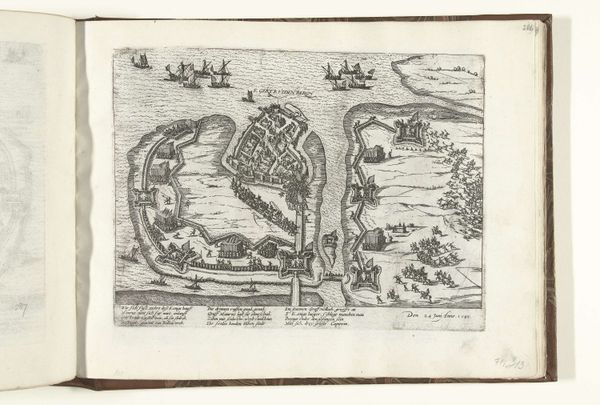
drawing, print, ink, engraving
#
drawing
#
baroque
# print
#
landscape
#
ink
#
northern-renaissance
#
engraving
Dimensions: height 200 mm, width 302 mm
Copyright: Rijks Museum: Open Domain
Editor: This print, titled "Plattegrond van eilanden voor de kust," which translates to "Map of Islands off the Coast," is attributed to Martinus Berkenboom, and likely dates between 1650 and 1715. It's an ink and engraving on paper. It gives off a really detailed, almost dreamlike quality to the landscape; a survey intended for functional purposes, yet infused with artistic charm. What do you see in this piece? Curator: This map offers a fascinating glimpse into the socio-political context of 17th-century Dutch maritime power. Maps at this time were not just navigational tools; they were assertions of territorial control and economic dominance. Consider the title, which mentions the 'Right' to specific actions, and references to the right to both 'begin and bevaren’, or sail and protect - one might say that this engraving alludes to the management of access for maritime passage for either local authorities or external forces. Does that title and its implications of rights resonate with you? Editor: It does now that you point it out! I was so caught up in the image itself that I didn't fully grasp the legal undertones. Curator: Precisely. Furthermore, note the presence of ships – they’re not merely decorative. They signal trade routes and the projection of Dutch influence. Think about how this image would have been perceived. Editor: As a statement of authority? Curator: Exactly. An accessible assertion of claims. It subtly reinforces the narrative of Dutch power on the seas. Editor: So, this isn't just a pretty picture; it's propaganda. It seems both visually pleasing but intended for those governing access or relying on the maritime traffic and rights that are referenced. Thanks. Curator: Indeed. And understanding that transforms our reading of the image completely. Examining art through its historical and political use reminds us of its complex relationship with the real world.
Comments
No comments
Be the first to comment and join the conversation on the ultimate creative platform.
